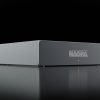BlackBerry maker Research in Motion and cell phone company Nokia are walking a tightrope by touting forthcoming “next big thing” products that may be as much as a year away, even as they try to convince consumers to buy their current generation of products.
In April, Research in Motion (RIM) launched a PlayBook tablet built on its new mobile operating system, QNX. Meanwhile, RIM co-CEO Jim Balsillie has been heard frequently touting QNX-based “superphones” coming in 2012. The problem for RIM is that its current BlackBerry devices run the older BlackBerry OS 7.0.
What does that mean for the company if customers delay planned BlackBerry purchases in favor of holding out for the next-generation QNX-based devices?
Nokia faces a similar challenge. The company’s current smartphones are based on an operating system called Symbian. But Nokia has announced that it will launch handsets based on Microsoft’s Windows Phone 7 starting in late 2011 as a result of a broad partnership between the two companies. Like RIM, Nokia faces uncertainty about whether it can hold its market share while waiting for a new product cycle to begin.
Indeed, Nokia cut its second quarter and 2011 outlook on May 31 due to weak demand for Symbian-based devices and falling average selling prices. In a statement, Nokia blamed “competitive dynamics,” “pricing tactics” and a product shift toward cheaper devices. Nokia CEO Stephen Elop acknowledged that “strategy transitions are difficult,” but added that Nokia will ship a Windows Phone 7 device in the fourth quarter.
Both RIM and Nokia still hold a sizable share of the mobile phone market, but they are losing ground to Apple’s iPhone and Google’s Android-based devices. The companies must figure out how to make it through the remainder of the current year while minimizing market share losses in the face of strong competition. “Managing product rollover is indeed a big challenge,” says Kartik Hosanagar, a Wharton operations and information management professor. “Not only is there a need to accurately forecast demand for the new product, but also [for] the old product.”
Meet the ‘Osborne Effect’
The technology sector is littered with companies that failed to effectively manage product transitions. There is even a term for it: “The Osborne Effect.” In 1983, Osborne Computer announced a series of next-generation PCs, highlighting how the devices would outperform the company’s current computers. That announcement led to a sales decline that ultimately forced Osborne into bankruptcy.
Hosanagar, however, dubs the Osborne lesson a “folk tale” because there were other management missteps that led to the demise of the company, and few expect RIM and Nokia to suffer the same fate as Osborne Computer. Yet many agree that both companies will have to sacrifice profits to entice consumers to buy their current products. “Technology companies in RIM’s and Nokia’s position will see profit margins go down,” according to Lawrence Hrebiniak, a Wharton management professor. “These firms have to compete on price primarily.”
For Nokia and RIM, that means rough times are ahead. Wunderlich Securities analyst Matthew Robison wrote in a research note that RIM is destined to lose customers until it is left with only a base of hard-core fans who have always used BlackBerries. “We no longer anticipate Research in Motion recovering to participate in the mainstream of smartphone industry growth,” said Robison.
The picture for Nokia is similarly uncertain. Morgan Stanley analyst Patrick Standaert stated in a research note that Nokia’s market share “could continue to fall sharply” because the company’s long-term strategy is tied to “the ‘hard-to-call’ success of the Windows ecosystem.”
Wharton management professor Saikat Chaudhuri agrees with both companies’ long-term efforts to innovate, “but they could have done a better job on the product and portfolio management side,” he says. “The idea is to have a healthy portfolio, but you can’t always have something exciting and new.”
Without a new product available to spur growth, both companies’ profits are being squeezed. RIM cut its outlook for its fiscal first quarter on weaker-than-expected BlackBerry shipments. The shortfall, said Balsillie on a conference call April 28, was due to “a natural aging” of its product line and the “transition to newer products.”
Elop had a similar refrain on April 21 as the company warned of difficult quarters ahead. Morgan Stanley’s Standaert expressed concern with Nokia’s market share drop in recent quarters because, he noted, the company is stuck with “its weak portfolio” until Windows Phone 7 devices arrive in late 2011 and early 2012. Nokia projected that its operating margins in the second quarter will fall from 9% to 6% to possibly break even.
According to Gartner, Nokia’s global first quarter market share across all mobile devices was 25.1%, down from 30.6% a year ago. In smartphone platforms, Nokia’s Symbian operating system had a market share of 27.4% in the first quarter, down from 44.2% a year ago. RIM’s operating system market share was 12.9% in the first quarter, down from 19.7% in the same period a year ago. Those losses came at the expense of Apple’s iOS and Google’s Android smartphone systems.
Many other technology companies have announced next-generation products before their time and, in doing so, undermined sales of their current products. In 1997, Sega announced its next-generation gaming system, called the Dreamcast, only two years after launching the Saturn, which had failed to gain significant market share against competing products like the Sony PlayStation and Nintendo 64. The Dreamcast wasn’t released in the U.S. until 1999, but once users and developers knew that Sega was no longer committed to the Saturn, sales and game releases sagged.
Palm announced its new operating system, WebOS, with much fanfare in early 2009. But the operating system didn’t actually debut until June 2009, and sales of Palm’s current products plummeted during that interval. Once the WebOS appeared, Palm saw sales spike for a few quarters, but then drop off again. Hewlett-Packard bought the company in April 2010 for $1.2 billion.
“There’s a fine line between selling current products and touting future ones,” says Andrea Matwyshyn, a legal studies and business ethics professor at Wharton. “Unless a consumer has a real need for a product at that moment, the natural response is to wait for the next generation.”
Transitions to a new operating system are relatively rare because of the potential for a disruption in sales numbers, notes Wharton operations and information management professor Karl Ulrich. “The impact of product change is minimized when the changes are made frequently and when changes are small. In those circumstances, the benefit of [customers] waiting a month to purchase is always” insignificant, Ulrich says. “As the changes become more substantial, and the time between them increases, these changes become more disruptive.”
The ‘Geek Chic’ Factor
There is a delicate balancing act when it comes to highlighting new products while keeping sales robust for the existing ones, according to Kendall Whitehouse, director of new media at Wharton. “It’s a double-edged sword. If you don’t outline a vision for the future, people think you don’t have any direction. If you announce specific products too early, however, you risk sinking the current product’s market.”
Those concerns emerged almost immediately for RIM. On RIM’s fourth quarter earnings call, Balsillie talked about the QNX-powered superphones coming in 2012. Analysts showed concerns about current sales right away. On March 24, Scotia Capital’s Gus Papageorgiou asked Balsillie why consumers would buy the BlackBerry devices arriving in 2011 when QNX versions were coming just a year later. “Why not just wait for the QNX devices and hold off?” asked Papageorgiou. Balsillie acknowledged that “Yes, there’s a superphone strategy and this is a time of transition,” but added that the 2011 BlackBerries would have “a very substantial enhancement to the product in some profound ways.”
A month later, however, RIM slashed its outlook, while Balsillie said the initial profit hit will be worth it. “We’re cutting over to a whole new platform, a whole new set of products, a whole new set of architecture. And it’s very powerful,” noted Balsillie, who added that the transition sets RIM up for the next decade.
On Nokia’s earnings conference call in April, Elop said that the company closely monitored sales of its existing products and worked to bolster sales ahead of a transition to Microsoft’s Windows Phone 7. For Microsoft’s part, the company on May 24 pre-announced more than 500 new features for the operating system designed to hit the market in late 2011 in time for Nokia’s new phones.
In the meantime, Elop acknowledged that Nokia would have to take “tactical pricing actions in various markets” to move its Symbian phones. “Both [companies] are falling behind on smartphones,” Chaudhuri notes. “They are trying to do something different. Is this the solution, though? Some would say these moves won’t help at all.”
Matwyshyn cites the evolving smartphone market as the biggest challenge for RIM and Nokia. Smartphones used to revolve around functionality, like email, security and phone calls. Today, smartphones are more like a fashion accessory. Nokia and RIM can match Android and Apple features, but still be seen as boring by consumers. “The war isn’t about functionality; it’s about consumer perception,” Matwyshyn says. “Without a standout product, both RIM and Nokia are seen as also-rans. They are not capturing mindshare, and it’s tough to compete where image is becoming more important. There’s a geek chic factor [that] neither RIM nor Nokia have.”
According to Chaudhuri, a healthy innovation and product management portfolio would have new releases that are staggered as well as various devices that may peak at different times for various markets. “There should be stages and levels of innovation.”
Both Nokia and RIM could recover, but there are many uncertainties. “If Nokia and Microsoft form a good partnership, and Windows Phone 7 devices sell, a transition looks manageable,” says Chaudhuri. For RIM, the health of its innovation portfolio rests with the PlayBook, a tablet designed to compete with the iPad. If sales go well, the PlayBook may be able to offset lost sales of BlackBerries as RIM moves toward QNX, Chaudhuri adds.
‘You Have to Sell Like Crazy’
While both Nokia and RIM are likely to lose market share as they transition to new smartphones, there are many nuances to consider. Hrebiniak notes that, with the right strategy, companies in product transitions can sell current editions of their wares and even gain market share. “These companies are like an automaker clearing out inventory because they know new models are coming,” says Hrebiniak. “The new models have value, but the old ones do, too. The question is, to whom do these old models have value?”
For instance, Nokia and RIM could use price as a weapon and “find new models and markets where smartphones are untapped,” Hrebiniak points out. “You may have to go to a lower end of the market with a lower price.”
With that approach, it’s likely that both Nokia and RIM would have to turn their focus outside North America and Europe. “Even if margins are falling, the devices are still contributing to revenue,” according to Hrebiniak. “You take a hit, but you can gain share.” Hrebiniak adds that it would make sense to flood emerging markets like India and Pakistan with outgoing devices. While Nokia’s Symbian devices may not woo iPhone users in the developed world, there are many other markets where those devices would be a hit.
Whitehouse agrees, and says the mobile phone market is more nuanced than most believe. “If you want the latest functionality and a lot of apps, you’re not going to buy one of the current products [from Nokia or RIM]. But these phones will work for many,” he notes, citing the example of the BlackBerry as the product of choice for people who want a mobile device primarily for corporate email.
“The mobile device space is not one market,” Whitehouse adds. “It’s a market with different segments. There’s one segment that wants core functionality at a better price point. Those people are customers for their current generation products. For people who want the latest and greatest, Nokia and RIM are telling them to hold on, it’s coming.”
As for their respective product transitions, “essentially, RIM and Nokia just have to struggle through this phase in the hope that their future products will meet a receptive market,” Ulrich says.
What does short-term victory look like for RIM and Nokia? “Companies in these transitions want to nurture new customers and create value in their minds while preparing for great new products,” Hrebiniak notes. “These companies are marketing to core customers in advance and hoping they wait for them. Older products will need new markets. In both cases, you have to sell like crazy.”
What’s unclear is whether consumers will buy what Nokia and RIM are selling in an industry dominated by Apple and Android. Nokia and RIM could do everything right and still not catch up. “There’s going to be a lot of luck involved,” says Chaudhuri.
Reprinted with permission from Knowledge@Wharton, the online research and business analysis journal of the Wharton School of the University of Pennsylvania
More coverage: Nokia news, Blackberry news, Microsoft news, Apple news, Android news






























